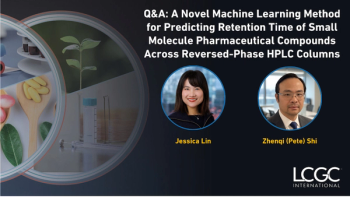
New Green Reversed Phase-High Performance Liquid Chromatography Method Tested on Pharmaceutical Mixtures
Scientists from Egypt have developed a green reversed-phase high-performance liquid chromatography (RP-HPLC) method to determine the amounts of methionine and paracetamol in different mixtures.
In a new study published in Chromatographia, a group of scientists from Tanta University in Egypt have developed a new green reversed-phase high-performance liquid chromatography (RP-HPLC) method to analyze the levels of methionine and paracetamol in mixtures (1).
Paracetamol is a central analgesic and antipyretic that is commonly used for alleviating pain. It works by increasing the pain threshold via reduction of prostaglandin production in the brain and spinal cord. Methionine, an amino acid found in various dietary supplements, helps cell functions, and manages liver disorders. It also prevents paracetamol poisoning when combined. These two drugs are usually combined in dosage forms, often to treat glutathione deficiencies in patients with liver diseases or severe COVID-19 symptoms.
In this study, the scientists developed a green reversed-phase high-performance liquid chromatography (RP–HPLC) method, using glycerol as a green mobile phase with water, for the simultaneous determination of methionine and paracetamol. RP–HPLC usually involves the separation of molecules based on hydrophobicity, with the separation depending on hydrophobic binding of solute molecules from the mobile phase to hydrophobic ligands attached to the solvent. The scientists also used this system to analyze samples within their standard and in Hepamol tablets. The substitution of glycerol was a conscious choice, compared to the use of normal organic solvents like acetonitrile and methanol. “This substitution has no adverse environmental impact and results in improved peak shapes, opening the door for future RP-HPLC applications and applications in other liquid chromatography modes,” the scientists wrote in the study (1).
Chromatographic conditions were optimized using a factorial design, with Minitab 17 Software assisting in the process. The method was performed on a C18 column at 38°C, with the mobile phase consisting of glycerol and phosphate buffer, with the addition of a diode array detector at 210 nm. The mixture eventually separated after five minutes. The method was further validated in accordance with ICH requirements over linearity ranges of 10–90 µg/mL for both drugs, with both sharing limits of detection (LODs) of 3.33 µg/mL.
Glycerol proved to be effective, due to its high safety, low flammability, lower LODs for measuring compounds within green metrics. Even with its high viscosity, it was easily manipulated with water and temperature control. Though there is still work to be done, the researchers wrote, “This work may be revolutionizing for analytical chemistry scientists for more futuristic applications using glycerol as a green organic modifier in other modes of HPLC and in macromolecules analysis” (1).
Reference
Habib, A.; Mabrouk, M. M.; Fekry, M.; Mansour, F. R. Glycerol-Based Green RP-HPLC Method for Simultaneous Determination of Methionine and Paracetamol in Pharmaceutical Tablets. Chromatographia 2023, 86, 707–716. DOI:
(2) Aguilar, M-I. Reversed-Phase High-Performance Liquid Chromatography. Springer Nature Switzerland AG 2004.
Newsletter
Join the global community of analytical scientists who trust LCGC for insights on the latest techniques, trends, and expert solutions in chromatography.




